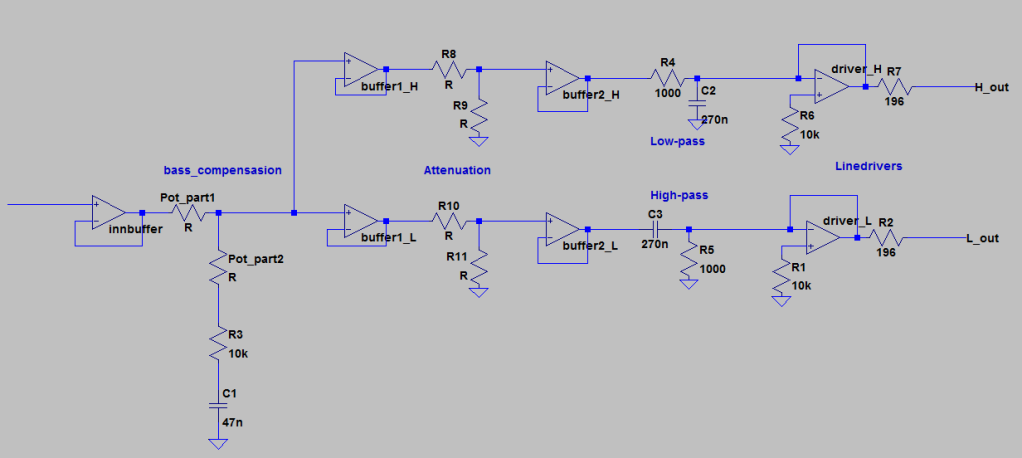I think I will try out a compensation circuit first. I might try a rounding of the edges after a while, but I'm thinking that might be a bit harder to make as I have no experience (what so ever) with woodwork. I do know electronics though.
I'm thinking about something like this:

First draft, with a crossover frequency of 569 Hz. I haven't set the attenuation yet, and I'll probably just remove the stage for the LF.
I think I'll skip some buffer stages in a final design though. If necessary, I'll add a delay stage.
Line-driver values are "stolen" from Linkwitz.

I'd like to try an Sallen-Key topology for the LP- and HP-filters, instead of the passive networks I've drawn.
My plan with regards to the crossover/filter will probably be to experiment with crossover-frequencies and such using a Behringer DCX2496 or a similar alternative, and then implement it in something like this schematic.



 Reply With Quote
Reply With Quote






